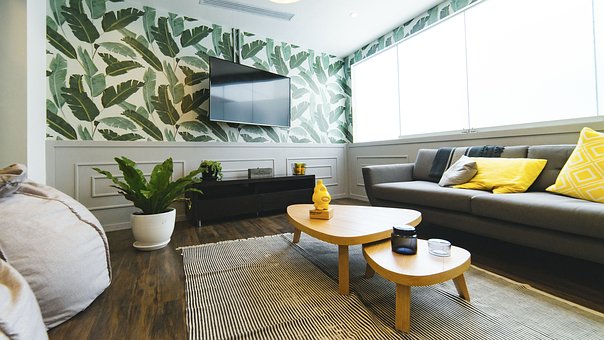During the 1950s, television sets were the latest technological trend. They were these state-of-the-art boxes that everybody wished to have. Back then, people were happy even to own a TV, scrolling through only a few channels, mesmerized by the magic of live broadcast.
Today, however, the story is a bit different. TVs are an integral part of almost every home, they’ve changed their shape, and they have features and characteristics more similar to computers than regular old television sets.
Moreover, people are not occupied with what’s shown on TV anymore. Instead, they are looking at measurements like inches and pixels. TVs are getting bigger by the day, but bigger is not necessarily better.
If you’re planning to buy a TV, what size should you choose? There are several things you need to take into account before you decide, and in this article, we will go over all of them.

The Room
One of the first mistakes people make when they decide to buy a TV is completely ignoring the room they will put it in. Most of the time, you will find the TV in the living room, but you can also put one in the bedroom, kitchen, office, or wherever you see fit. In any case, the size of the TV should be chosen according to the size of your room.
Consider the furniture in the room and how you can rearrange it to have the best possible view. Have you thought about how you are going to set your TV? Is it going to be wall-mounted or freestanding? Freestanding TVs can be even a foot closer to the viewer than wall-mounted ones, in which case you can opt for a smaller size. Also, you should consider the height; it will depend on the height of your sofa or chair.
We understand that you might not know how a certain TV will look in your room until you try one out. Renting a high-quality TV from Hire Intelligence Australia will give you a chance to test the TV in your room before you decide to buy one.
Resolution and the Screen
When we said earlier that size isn’t everything, we meant that resolution is much more important than the diagonal length of the TV itself. Higher resolution allows for a clearer and sharper image, and it also means that you can sit closer to your TV without noticing any pixilation.
So, a 1080p, 50-inch screen might be bigger than a 4K, 42-inch one, but the picture quality of the latter is much higher and you will be enjoying a crisper image even if you’re sitting close to it.
You might think that there isn’t such a thing as a TV that’s too big, but you would be wrong. The screen should only cover around 40 degrees of your visual field so you won’t have to turn your head or wonder with your eyes. A narrower visual field, on the other hand, could mean that the TV appears too small from your position.
The Measurement
Considering everything we’ve discussed so far, you should first take some measurements to calculate what TV size is best for you. It is advisable that you take these measurements before buying a TV rather than after if you want to avoid moving the furniture and rearranging your room layout.
There are plenty of formulas for calculating the right distance, but many agree that for 1080p TVs, the best way to find out how far away you should be sitting is by doubling the TV’s diagonal. So, if you are looking at a 50-inch screen, you should sit at around 100 inches from the set.

For 4K TVs, this formula differs slightly. As these TVs can be seen more clearly from a shorter distance, you won’t need to pull back that much. Multiply your TV’s diagonal by no more than 1.5, although you shouldn’t see pixels even if you sit close. This time we will take a 42-inch screen as an example. When it comes to 4K TVs, a 42-inch screen diagonal means that you should sit between 42 and 63 inches from the TV.
Final Thoughts
We hope this article will help you make the right decision the next time you’re buying a TV. As bigger TVs become more affordable, you shouldn’t buy them unless you have space in your room for them. Keep in mind that the point is not to see the pixels but the picture.
